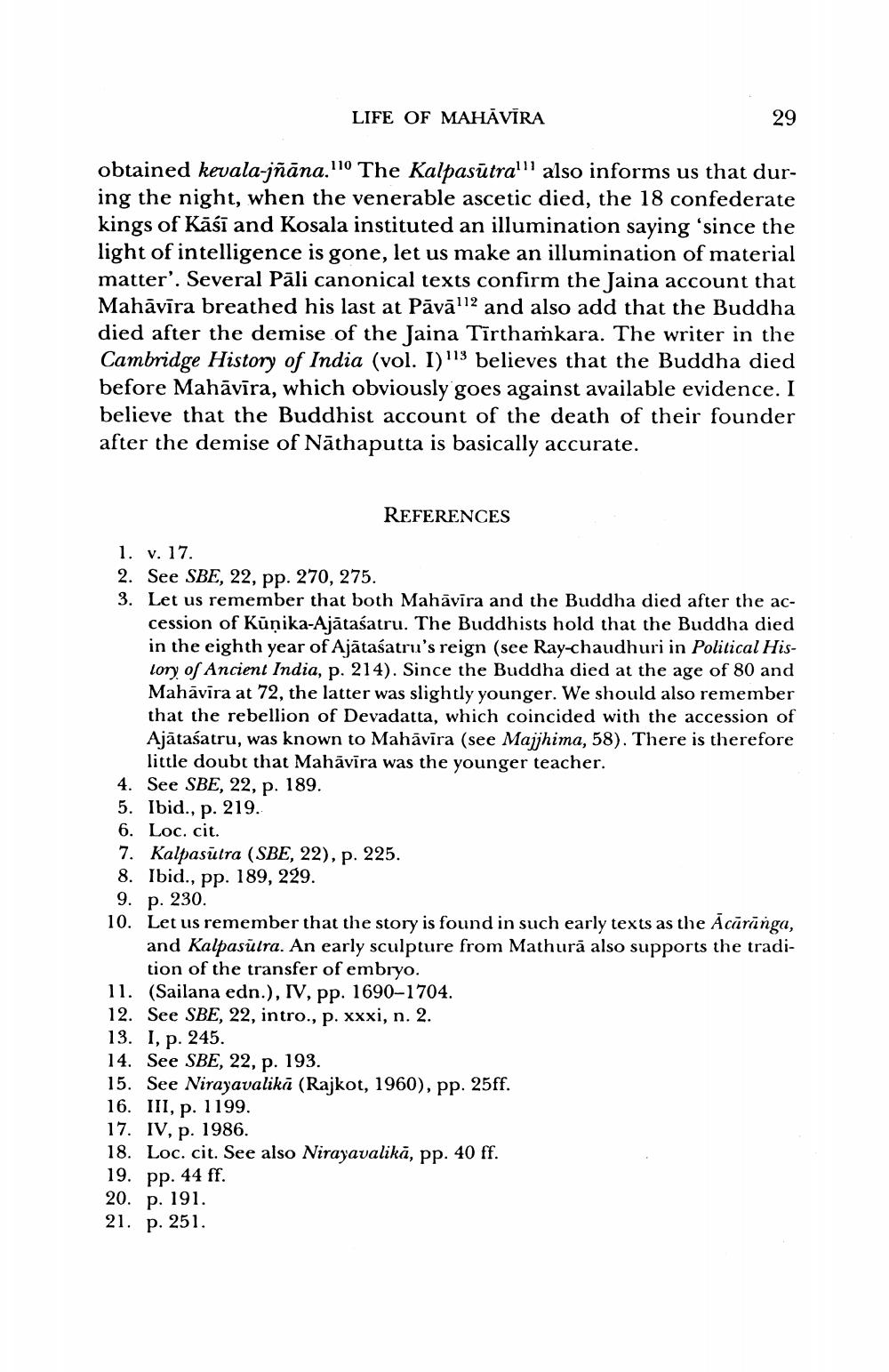________________
LIFE OF MAHĀVĪRA
obtained kevala-jñāna.110 The Kalpasūtra111 also informs us that during the night, when the venerable ascetic died, the 18 confederate kings of Kāśī and Kosala instituted an illumination saying 'since the light of intelligence is gone, let us make an illumination of material matter'. Several Pāli canonical texts confirm the Jaina account that Mahāvīra breathed his last at Pāvā112 and also add that the Buddha died after the demise of the Jaina Tīrthaṁkara. The writer in the Cambridge History of India (vol. 1) 113 believes that the Buddha died before Mahāvīra, which obviously goes against available evidence. I believe that the Buddhist account of the death of their founder after the demise of Nathaputta is basically accurate.
4. See SBE, 22, p. 189.
5. Ibid., p. 219.
6. Loc. cit.
REFERENCES
1. v. 17.
2. See SBE, 22, pp. 270, 275.
3. Let us remember that both Mahavira and the Buddha died after the accession of Kūņika-Ajātaśatru. The Buddhists hold that the Buddha died in the eighth year of Ajātaśatru's reign (see Ray-chaudhuri in Political Hislory of Ancient India, p. 214). Since the Buddha died at the age of 80 and Mahavira at 72, the latter was slightly younger. We should also remember that the rebellion of Devadatta, which coincided with the accession of Ajātaśatru, was known to Mahāvīra (see Majjhima, 58). There is therefore little doubt that Mahāvīra was the younger teacher.
7. Kalpasūtra (SBE, 22), p. 225.
8. Ibid., pp. 189, 229.
9. p. 230.
10. Let us remember that the story is found in such early texts as the Acārānga, and Kalpasulra. An early sculpture from Mathura also supports the tradition of the transfer of embryo.
11. (Sailana edn.), IV, pp. 1690-1704.
12. See SBE, 22, intro., p. xxxi, n. 2.
13. I, p. 245.
29
14. See SBE, 22, p. 193.
15. See Nirayavalikā (Rajkot, 1960), pp. 25ff.
19. pp. 44 ff.
20. p. 191.
21. p. 251.
16. III, p. 1199.
17. IV, p. 1986.
18. Loc. cit. See also Nirayavalikā, pp. 40 ff.




